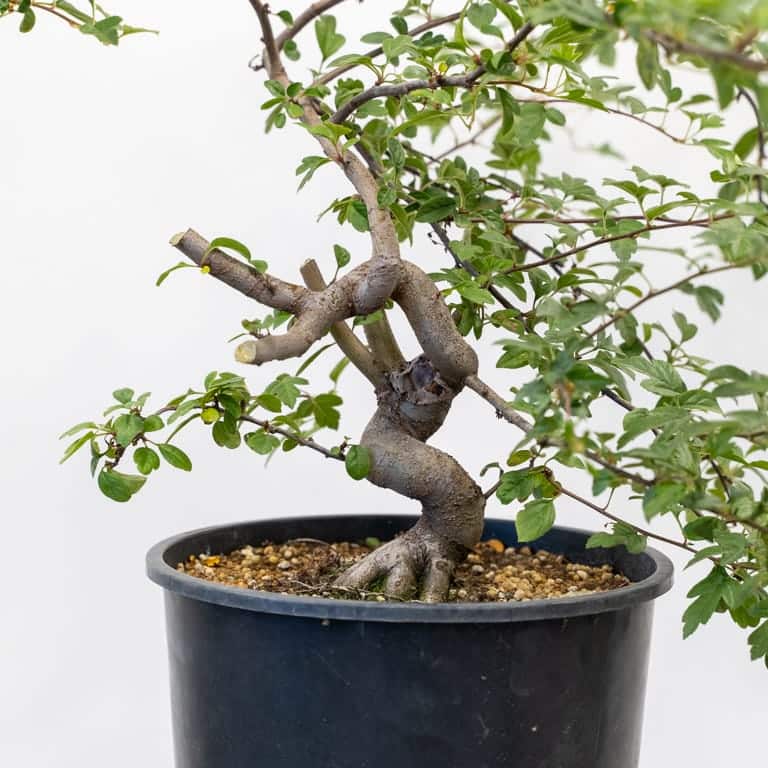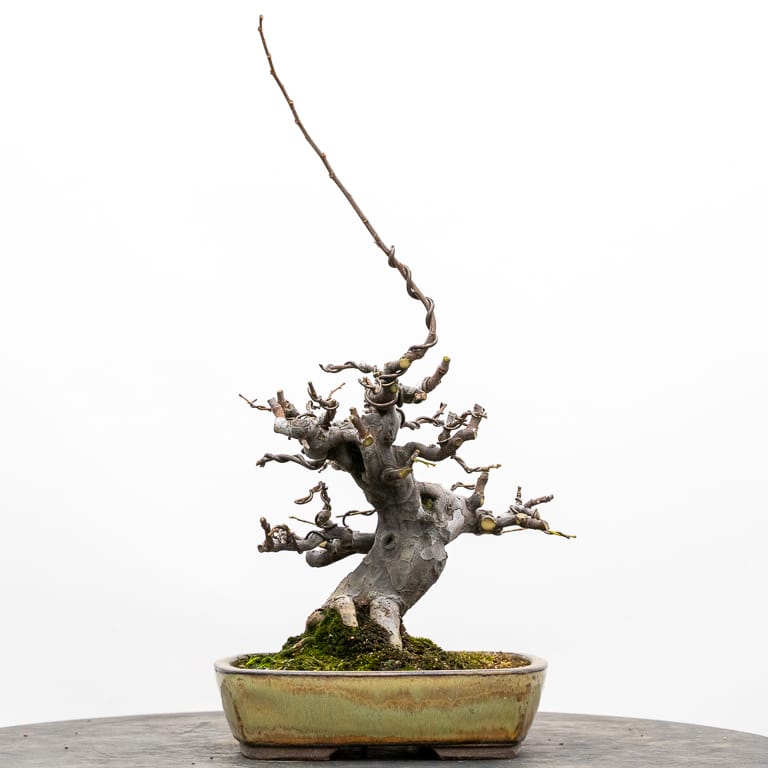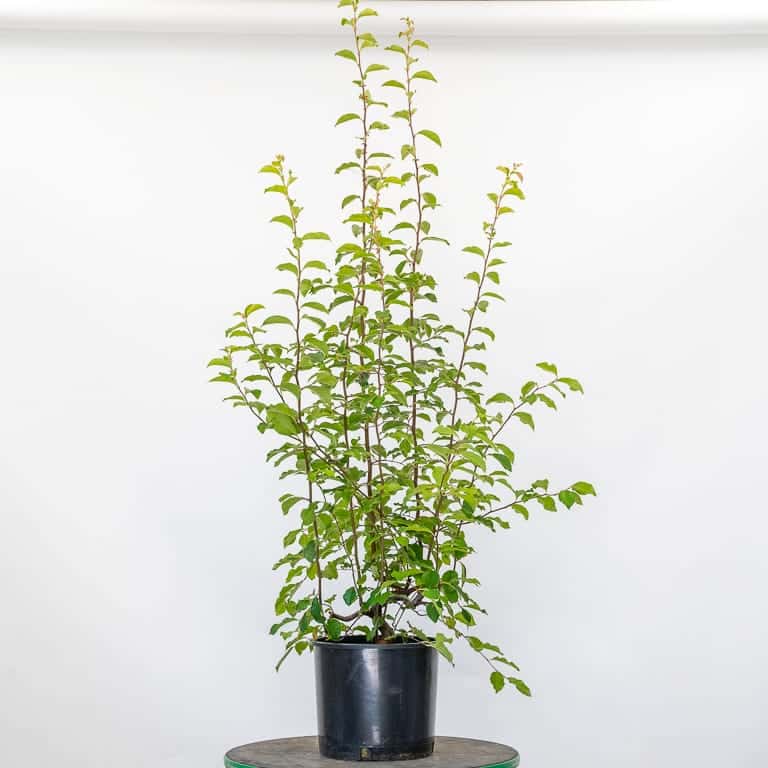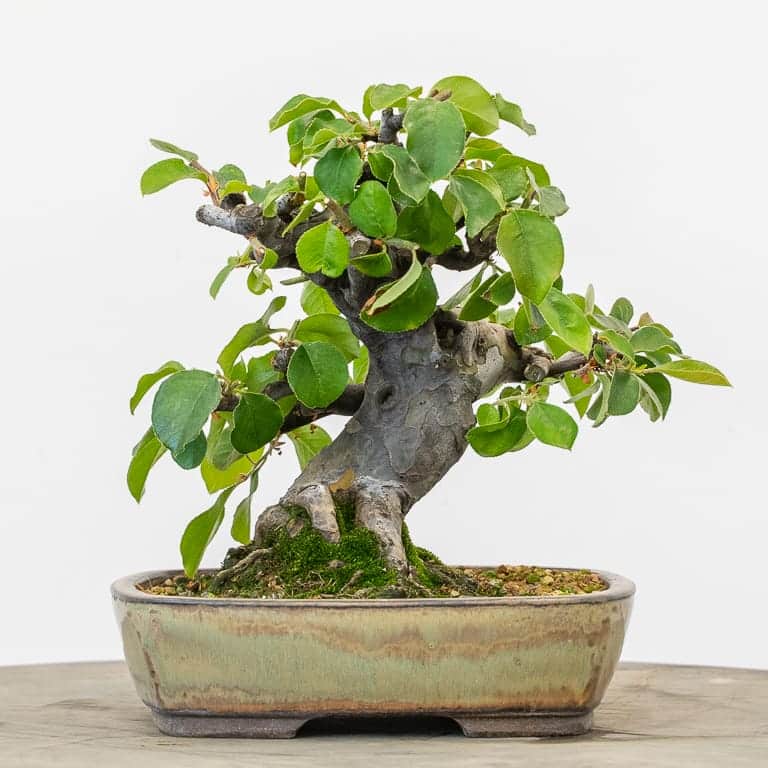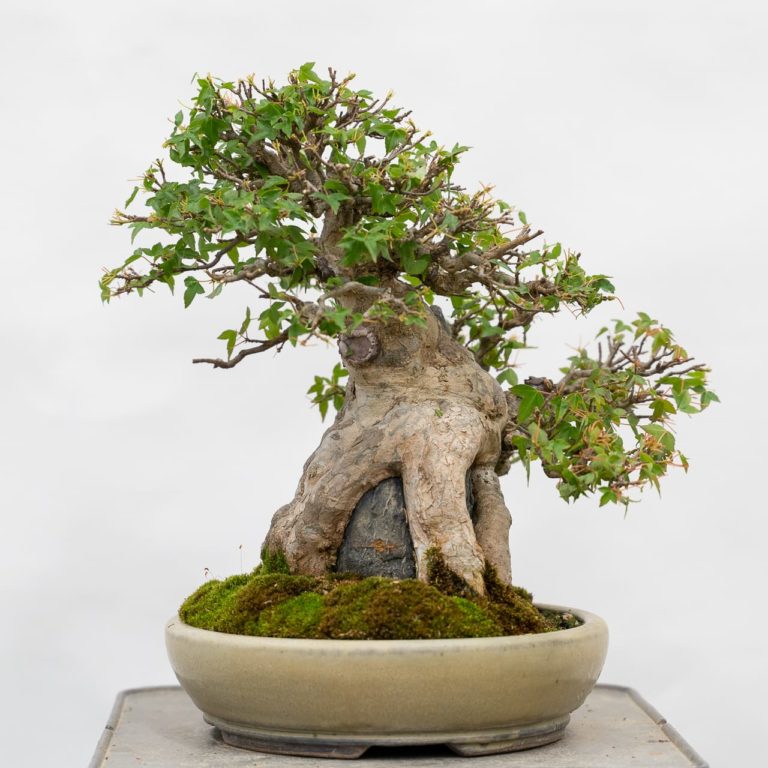It’s been a while since I last pruned some young quince and crabapples I’ve been growing from seed. By pruning in summer I can encourage them to produce new growth that I can wire in fall. Here’s a six-year old crabapple that I’m growing to be a shohin-sized tree. Siebold’s crab The trunk is close […]
Chinese Quince
Big branches and little branches on Chinese quince
Over the past few years I’ve wrestled with a question about developing Chinese quince: how do you encourage branches to bifurcate after pruning? I haven’t come up with an answer, but I did notice something heartening when I cleaned up an older specimen last week. Instead of keeping the summer growth in check, I let […]
Bonsai Development Series #20: avoiding problems during trunk development
There are two goals when developing pre-bonsai trunks: create interesting movement, and minimize flaws. Two of the most common flaws at this stage of development are awkward or inverse taper and scars on the lower section of the trunk. To keep these in check, I prune sacrifice branches before they get too big and thin […]
Spring cutback on Chinese quince
Last December, I decided to take a big step to improve the branch structure on a Chinese quince. I cut off most of the branches. The tree was fairly ramified, but the size and arrangement of the branches didn’t convey the gnarly character that I associate with quince bonsai. The remedy, although severe, is the […]
Leaf pruning vs. partial defoliation
Spring is a good time for managing vigor on deciduous species. We can fully defoliate our strongest trees, and partially defoliate less vigorous bonsai. An alternative to defoliation for species with larger leaves is leaf pruning. Leaf pruning works best when you want more light to reach the tree’s interior but you don’t want to […]
